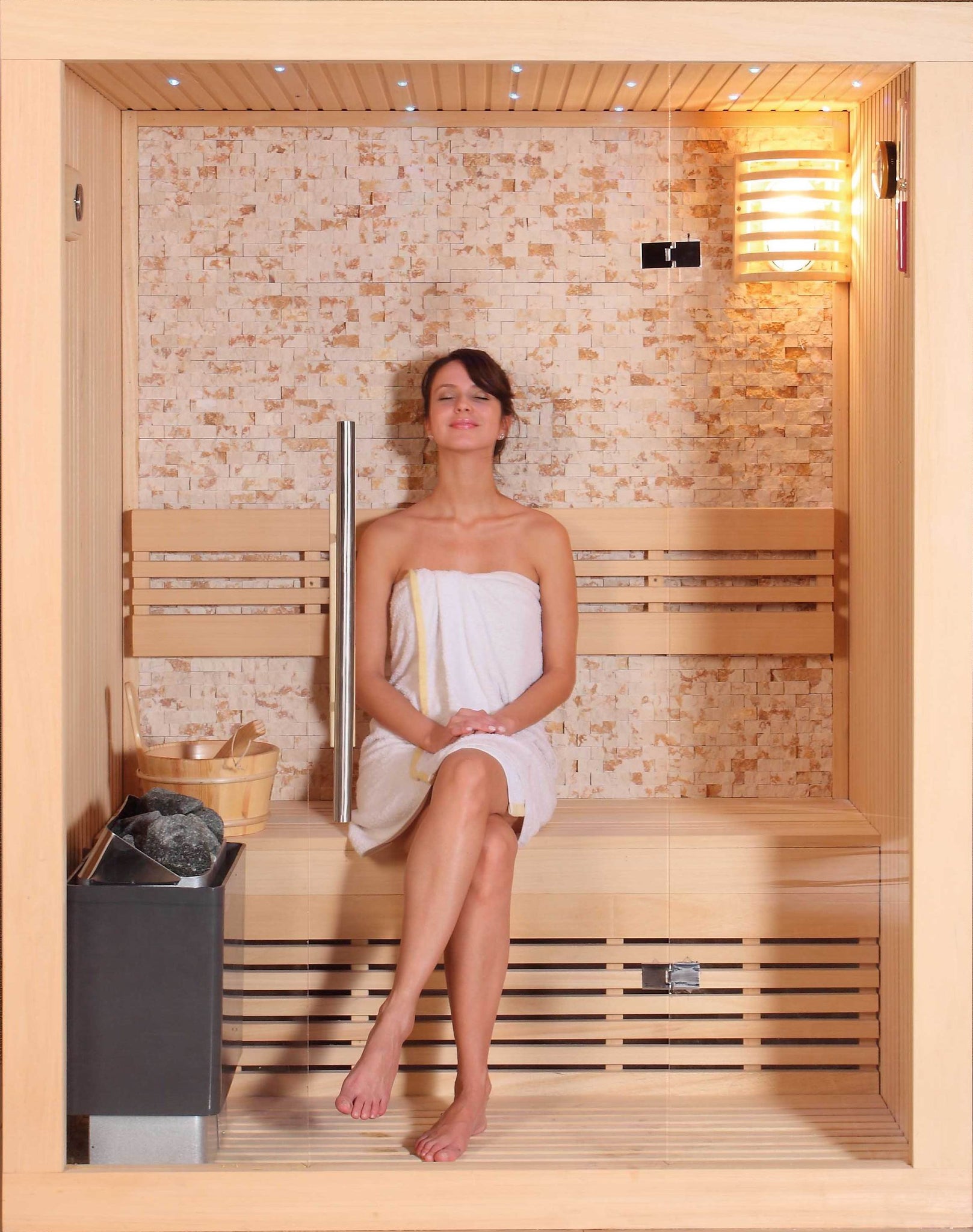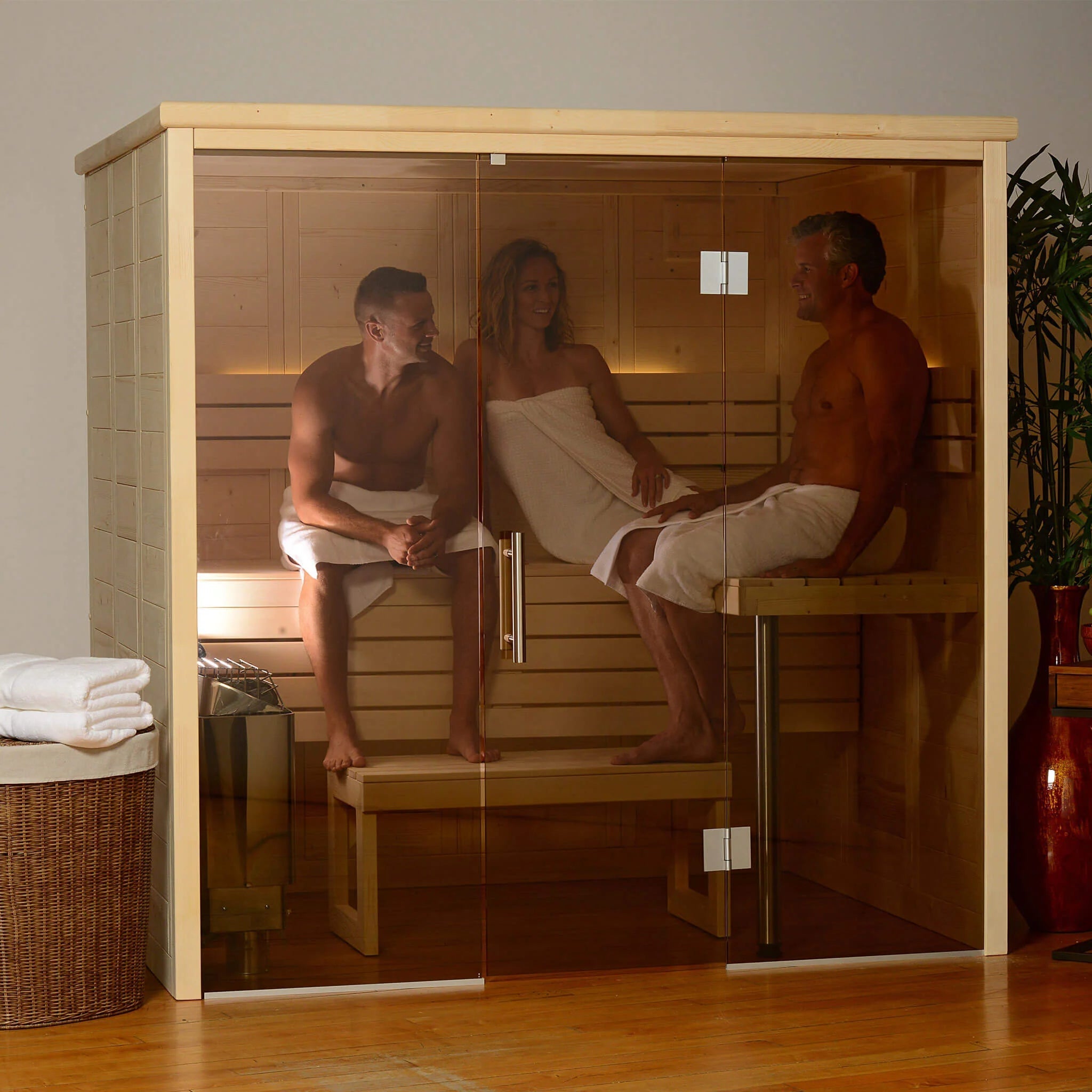Get This Report on Traditional Sauna
Get This Report on Traditional Sauna
Blog Article
Traditional Sauna Fundamentals Explained
Table of ContentsWhat Does Traditional Sauna Mean?The smart Trick of Traditional Sauna That Nobody is Talking AboutThe Of Traditional SaunaEverything about Traditional SaunaOur Traditional Sauna Statements
Many of the weight shed in a sauna is water loss and is re-gained upon rehydrating. Nonetheless, without a doubt sauna can be an integral part of a healthy and balanced weight reduction program. To check out the distinctions in between typical and IR saunas, I will certainly divide these right into proven, academic, and produced distinctions.Therefore, the most popular point in the saunawhich is at the ceiling directly above the sauna heateris typically between 185 and 190 F. Claims that a traditional sauna exceeds 200 F is just not real and not applicable for electric saunas marketed in the United States. The temperature level for a far-infrared sauna is normally established between 120 and 140 F; nevertheless, unlike the conventional sauna, the goal in and IR area is not to attain a heat.

When a conventional sauna has actually been appropriately heated, the sauna wall surfaces are warm, the air temperature level has attained set temperature level and the rocks are super warmed. As an interesting side note, the warmed walls and the rocks are producing far-infrared warmth, combined with the warmed air, to create an "covering warmth".
The 6-Second Trick For Traditional Sauna
When the heat is achieved, the aspects cycle on and off to keep the heat. A lot of standard sauna individuals appreciate pouring water over the rocks to produce heavy steam to elevate sauna moisture levels. The benefits of pouring water over the rocks consist of: making the area extra comfortable, moistening the nasal passages, and enabling the usage of aromatherapy by blending crucial oils with the water.

When the energy gets in the body, it creates the body temperature level to raise and inevitably leads to sweating. In an infrared sauna it's important for the emitters/heaters to stay on almost frequently. Considering that there is no mass of rocks to keep warmth, the sauna will cool if the emitters turned off.
The Only Guide to Traditional Sauna
As stated above, the sauna bather in an infrared room intends to position himself before operating emitters to obtain maximum gain from the warm. The heating time for the look at this now 2 rooms can be really different, relying on exactly how the rooms are utilized. For a conventional sauna, a bather should permit 30-40 minutes for the area to achieve a wanted temperature and to effectively pre-heat the rocks.

A well created sauna will generally accomplish a temperature level of 150-160 F in concerning 30-40 mins. For hotter temperature levels, the area may need to heat for a longer period.
To some, 15 mins was "thrown away" while the infrared power warmed the wood panels instead of heating a body, while others discover a pre-heated space to be a lot more comfy and think a raised beginning temperature level is essential to start sweating. The size of advised usage for each and every area is about the very same (10-15 mins per session); nonetheless, as a result of the reduced air temperature levels and the capacity to really feel the results of infrared warm quicker than a typical sauna, it is not unusual for an individual to spend a total of 20-30 minutes in an infrared sauna.
Facts About Traditional Sauna Uncovered

The typical price per kWH of electrical power in the united state is approximately $0.11, so a 4.5 kW heating unit will certainly cost about $.50 to run for one hour, if the heating system runs continuously for one hour. Commonly a sauna heating system will run for 75% of the initial hour and 50% of subsequent hours on because the components cycle once the established temperature webpage is accomplished.
A 2 individual far-infrared room is typically literally smaller sized than a traditional sauna, typically concerning 4' x 4' or smaller sized. The IR furnace is usually 1.5-1.7 kW utilizing a 120 volt 15 amp plug-in solution. Given that the room can be used faster than a sauna space, we will certainly think the area is used for to of an hour including warm up time.
There is a rarely gone over distinction in the social experience between the two spaces. While our culture has lost some of the social benefit of the conventional sauna experience, it can be extremely socially gratifying (Traditional Sauna). From household time in the sauna, to heart-felt conversations with loved ones, to sauna partiesthe conventional sauna experience can result in intimate interacting socially
Not known Details About Traditional Sauna
The majority of higher end infrared areas include tinted light therapy, audio systems and full-glass fronts.
Report this page